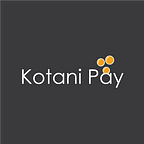Celo: The Shift from the Legacy Financial System to Sacred Economics
It is easy to understand the world we live in today by laying ideas side by side. The world is full of contrasts. Major ideas that drive whole nations, societies, and generations can be understood by juxtaposing them. Whereas capitalism encouraged private ownership and autonomous production by individuals, communism vouched for state ownership and the dependence of the individual on the commons. When John Meynard Keynes proposed government intervention as a solution for the global economic depression, the Austrian school saw government and Central bank interference as the cause of most severe boom and bust cycles.
In this article, we’ll review the differences between the legacy financial system and sacred economics and discuss how Celo enables this.
Economic growth
Today’s global financial system is dependent on perpetual growth. In the last fifty years, rich nations have focused on how to achieve faster economic growth in the hope that such growth would improve the living standards for their citizens. Despite this growth, growth in real wages has slowed in comparison to economic productivity since the 1970s. Michael Spence, a Nobel Prize laureate, states that “Missing from growth are many things: health, distributional aspects of growth patterns, a sense of security, freedoms of various kinds, leisure broadly defined, and more”. The legacy financial system is clearly not attaining its desired outcomes. Additionally, the pursuit of perpetual growth has resulted in adverse effects on the environment, including the eventual effect of extinction of many species.
Sacred economics is based on the core idea that the economic system is an extension of ecology rather than an exception to it. It proposes several measures that curtail the need for perpetual growth including the replacement of the interest-based economy with a gift-exchange-based economy. This leverages technologies and the open-source movement. Sacred economics sees an opportunity in reducing the human and financial resources required to administer financial distribution through centralized structures. It also proposes the virtues of high-density urban designs smaller dwellings, mass-transit-friendly layouts, and multi-use developments that don’t require so much driving, roads, gasoline, lumber and other raw materials that increase environmental pressures. Based on sacred economics, the world can become a better place by re-configuring the values on which money is based from ecological value extraction to ecological value creation and preservation.
The shift from scarcity to plenty
The legacy economic system is infamous for the creation of more debt than existing money, with the current global debt being about three times the current global broad money supply. The resultant sense of scarcity creates dehumanizing forms of capital around the world, from some Chinese workers handling 48-hour shifts to sustain the desired perpetual growth, to human trafficking to provide cheap labour. Furthermore, health and safety are neglected as unsafe and counterfeit products are churned out in a bid to maximize profits. Foods are grown with herbicides and pesticides that have carcinogenic potential just to achieve faster and more bountiful yields. This inhumane actions even spread to hospitals where services are denied to patients who cannot pay. The all-encompassing negative effect reflects on education systems, with public schools and facilities being stripped of their ability to serve the masses by fierce unbridled competition from private enterprise.
Sacred economics advocates that things that are free and for the common should not be privatized and sold. Water, forests, air, and land, should not be commoditized but left for the benefit of the community and future generations. Communities should be able to establish gift-exchange economies of their own that grow in line with their needs. The scarcity of paper money should not be a barrier to able-bodied individuals who can organize themselves around the representation of monetary value. Finally, sacred economics does away with the practice of usury which establishes a vicious cycle of requiring more money than exists in the system.
Moving from exclusion to inclusion
Most unbanked people do not have formal identification documents. The legacy financial system locks out most of these people due to lack of financial services that offer alternative credit scoring systems. Access to finance is therefore strongly linked to access to formal education, placing a large percentage of the population at double the disadvantage.
In this system, even when an unbanked individual has identification documents, credit scores are based on the volumes and amounts that a user has on the system. New users are therefore locked out of the system as they are in competition with people with well-established credit scores.
Furthermore, most financial systems require a level of sophistication that is post-tertiary, with requirements and conditions being difficult to understand and abide to, way above many requiring the financial system. The financial system is therefore opaque, creating a myriad of issues that limits use by the unbanked populations.
Sacred economics proposes an ecology and community-first approach. In sacred economics, the community works like a nest that houses the needs of its members. Members are rewarded as long as they contribute to the community. Communities can design entrance criteria that suit their members, which does away with the barriers of traditional KYC/AML systems. The concept of gift exchange ensures that individuals give what they have in exchange for what they need. This fosters the values of co-operation and inclusion as opposed to competition and exclusion. When communities learn to exchange gifts through peer-to-peer timebanks, peer-to-peer lending, and the peer-to-peer gig economy, financial middle-men are disintermediated, dropping costs of transaction and enabling access for millions of people.
Conclusion
Celo embodies the qualities of sacred economics in its ethos. The Celo platform is creating stablecoins that enable the application of sacred economics on a massive scale. We are excited about the future.
Previous Article|Telegram |Celo Blog | Watch the Sacred Economics Film | Read about Celo’s Theory of Change
